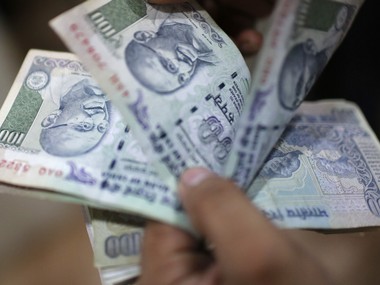There are quite a few non-banking finance companies (NBFCs) registered with and regulated by the Reserve Bank of India (RBI) that are allowed to accept fixed deposits (FDs) from the public. But none of them can operate a savings account for a customer, and as a corollary cannot issue cheque books. Their FDs invariably carry higher rates of interest vis-à-vis the rates on FDs offered by scheduled commercial banks (SCBs). To wit, Bajaj Finserv offers an interest rate between 8.10 percent and 8.6 percent, according to its website –bajajfinserv.in, which is nearly 200 basis points or two percent higher than the rate offered by the State Bank of India (SBI) for a one year deposit. The interest rate differential between the two is not small. Yet depositors don’t flock to NBFCs in droves – they are not deserting their own SCB with which they have both a savings account and fixed deposits. Perceptions and prejudice matter a great deal in the world of finance, as much as rational considerations do. NBFC deposits are innately riskier which is why a crediting rating has been mandated for them. A ‘AAA’ rating can win the confidence of the risk-taking depositor as opposed to a single ‘B’ rating for a rival NBFC that might offer a 10 percent interest rate as opposed to say nine percent offered by the former. For good measure, the RBI has appointed an ombudsman for the four metropolitan cities - Delhi, Mumbai, Chennai and Kolkata - to keep a tab on NBFCs in case they fail to honour their FD commitments. Yet there is a marked preference for the safety and convenience of SCB fixed deposits. Even an offer of security by NBFCs for their fixed deposits, which is lacking in the case of SCB FDs, has not triggered a wholesale tectonic shift to the former. [caption id=“attachment_4366925” align=“alignleft” width=“380”]  Representative image. Reuters[/caption] There is something in the banking psyche of people who seek the comfort of banking and investing under one roof. Banks offer the convenience of sweeping excess funds, parked in a savings account, into a FD. For example, a bank might have a scheme that states that in case your savings account balance crosses Rs 1 lakh, the excess would be swept into your one-year FD account that earns a relatively higher rate of interest, and, when the balance in that savings account falls below this benchmark figure of Rs 1 lakh, the deficiency would be made good by a reverse sweep, at no cost or penalty for premature breaking of the FD. Net savvy investors also love the comfort of the ‘doing it yourself’ model, i.e. operating their accounts from the comfort of their homes. For example, Kotak Mahindra Bank allows you to open a fixed deposit through your net banking account, and has eliminated the need to visit a branch for opening a FD, redemption or renewal. The point is that while people wish to improve their returns, they also love the convenience and safety that SCBs offer, which is why NBFCs haven’t caught the imagination of the investing public in a big way. That apart, there are tax issues: 1) Section 80C allows you to invest in five-year or longer FDs of SCBs in order to claim a deduction of up to Rs 1.5 lakh from your gross total income. This is not possible with NBFC deposits. 2) Section 80TTB allows senior citizens, with effect from 1 April 2018, to earn a tax-free FD interest of up to Rs 50,000 along with their savings bank interest, without being pared down by TDS, provided they are from SCBs. This is obviously not available with NBFC deposits. Remember, senior citizens are the largest patrons of FDs. The truth is that bank loyalty is so deep-rooted that a comparatively higher interest rate paid by certain private SCBs has not resulted in people shifting their savings account from public sector banks (PSBs), offering the historical four percent or lower rate of interest in recent times. The FD is seen as an extension of one’s savings account. Your friendly branch manager allows you to break it prematurely besides being more than willing to grant loans on their security.
In the case of FDs, bank-loyalty and tax benefits help SCBs score over NBFCs.
Advertisement
End of Article


)
)
)
)
)
)
)
)
)



